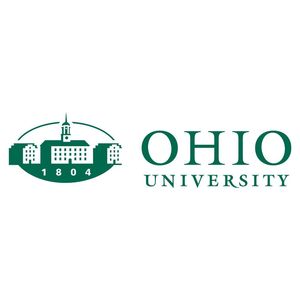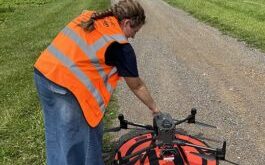Ohio University has been awarded a grant to investigate using unmanned aircraft in Appalachian Ohio for applications such as delivering packages to homes and transporting patients to hospitals and travelers to airports.
Since the Wright Brothers’ first flight in 1905, aerospace has grown into a multibillion-dollar industry in Ohio. While manufacturing is concentrated in the Cincinnati-Dayton aerospace corridor, aviation makes its presence felt in other parts of the state as well.
“Appalachian Ohio has an unrecognized but significant aviation economy,” said Brent Lane of Ohio University’s Voinovich School of Leadership and Public Affairs. Of the 32 counties in Appalachian Ohio, 27 have airports and there are nearly 600 aircraft based in the region.
“Business aviation and aviation in general has a surprisingly important role in rural communities,” Lane said. “It has previously been somewhat limited by cost, but we have a new generation of aircraft that will reduce some of those cost barriers.”
Lane said that Ohio University was approached by the Ohio Department of Transportation (ODOT) as part of its FlyOhio initiative because of its strong ties to local communities throughout Appalachian Ohio and its long history of community engagement.
“We’re in a very good position and we have a lot of existing relationships and ongoing activities across the region,” Lane said.
ODOT has invested significantly in the development and practical use of unmanned aircraft through the Unmanned Aircraft Systems Center (UAS). At present, these vehicles are primarily used for tasks such as infrastructure and bridge inspections.
“It’s through the broader FlyOhio initiative that we’re looking at the future as we see a greater proliferation of drones” and other unmanned aircraft, said Rich Granger, managing director of the UAS.
Granger said Ohio is “uniquely positioned” to capitalize on electric vertical takeoff and landing aircraft (EVTOL) because of its strong aerospace and automotive manufacturing industries.
“There are so few places that are strong in both automotive and aerospace manufacturing and when you blend those two skill sets together with these new aircraft, we think it’s a huge opportunity for the state,” Granger said.
Granger said there are a variety of commercial applications for EVTOLs being discussed, such as package delivery. One startup, Drone Express, has begun delivering groceries to customers in Springfield in conjunction with Kroger.
EVTOLs may eventually replace helicopters as a means for transporting patients to hospitals. Lane said the primary advantage of EVTOLs over helicopters and propellor-driven aircraft is cost.
“It costs thousands of dollars an hour to use a helicopter,” Granger said. “There are conventional propellor-driven aircraft that are far less expensive, but they require extensive runways to operate.”
Emergency air medical services are one of the most costly parts of the healthcare system today and the widespread adoption of EVTOLs will not only help reduce the cost of such services, but may also displace traditional ambulances.
“We’re seeing a lot of interest in the healthcare space with EVTOLs,” Granger said. “Many of us have had the experience of needing to get a relative to the hospital and taking an inordinate amount of time by ground ambulance to get there.”
Other potential uses include personal mobility and shuttling people in rural communities to large, commercial airports.
“While it’s not possible to predict how ubiquitous these will become, whether it becomes another form of personal transport, long before then we’ll see other applications that have important implications for our economy,” Lane said. “I think one of the most immediate ones would be to expedite air travel in general by getting us from Appalachian Ohio to hub airports faster, so instead of taking an hour and a half, it takes you 20 minutes.”
The Voinovich School plans on conducting a series of workshops or seminars around the region showcasing EVTOL technology and its potential uses, with particular emphasis being placed on the input of college and high school students.
“In this project, one of the distinct elements of community engagement is to make sure we’re engaging with young people,” Lane said. “So we’re working on the process to engage with students, give us some feedback on potential uses. Then we’ll be looking at other college-age students and young professionals in the region.”
The UAS has also worked with college and high school students, launching design challenges and student-led initiatives throughout the state as part of its workforce development programs.
“Both college and now high school students are interacting with folks from some of these air mobility companies and with NASA,” Granger said. “Having students involved brings a level of energy and enthusiasm that we’re excited about, which to me is an indicator of all the potential that’s on the horizon because those students bring that energy into their careers, and I just can’t wait to see what kind of innovations they come up with.”
 Unmanned Aerial Vehicle The latest drone news
Unmanned Aerial Vehicle The latest drone news



